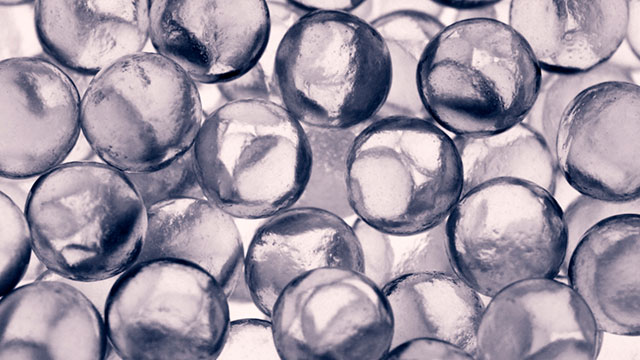Better Cell Disruption with Beads
Getting a quick grind without breaking the bank

A variety of tools are available to help researchers release the contents of their cells. Methods for cell disruption fall under two broad categories: mechanical methods, which use force to open the cell wall or lipid membrane, and nonmechanical methods, which include physical, chemical, and enzymatic methods. “I think that they both have merit,” says Tim Hopkins, president and CEO of BioSpec Products (Bartlesville, OK), who notes that the vast majority of scientists favor mechanical methods because of their speed. Kyle James, vice president and business unit manager for Retsch at Verder Scientific USA (Newtown, PA), adds, “it depends on what type of sample you have…some cell types can be really difficult to break down so that’s where we come into the mechanical side of it.”
Scientists can disrupt their cells mechanically by grinding them with a simple mortar and pestle, sonicating them with an ultrasonic homogenizer, blending, freezing, or microwaving them. But, as Hopkins explains, more and more people are now turning to bead beating (aka bead milling). “It’s really the only method that can lyse cells inside of a microvial by the addition of small glass beads, and essentially guarantee no cross contamination and guarantee that you don’t have anything to clean up or decontaminate or make ready for the next sample,” he says.
More options
Although bead mills have been around for some time, the products are still advancing. For the past 30 years, BioSpec has offered a series of bead mills that homogenize samples inside of 2 ml microvials, says Hopkins. More recently, the company has come out with a new bead mill called SoniBeast, which disrupts small samples around 10 times faster than their standard units do. In addition to Retsch’s mixer mills, which have been on the market for over a decade, James notes that their CryoMill is highly popular among scientists. The unit connects to a liquid nitrogen tank to cool the material in the grinding jar to -196°C, resulting in a powder, rather than a liquid, matrix.
Related Article: Mills and Grinders: Like Coffee, Some Science Needs Just the Right Grind
Accessories are also improving. “Whereas in the past we had only grinding jars or little 2 ml tube adaptors and things like that, now we’re developing larger adaptors, so that customers have more options,” says James. “Maybe you have more cell culture or more tissue than a 2 ml tube can fit; now we can offer additional accessories for larger sample sizes or higher throughput.”
Quality and quantity
Still, scaling up—especially at an industrial scale—remains a challenge. One of the issues, explains Hopkins, is that mechanical methods of cell disruption generate heat. “So, the interest in scale-up often shifts to ‘How can we control the heat? How can we get a throughput that is going to deliver a quality product and not cost a great deal of money with a very expensive piece of equipment?’” Though scaling up is a costly endeavor, in terms of price per sample, Hopkins says bead milling beats out almost all other methods.
A valuable resource
The vendors that sell these tools have, in many cases, developed in-depth knowledge of a wide range of celldisruption methods for various sample types, making them a prime resource for their customers. “One day someone could be working with a biopsy sample…and you have other customers that are working with yeast cells, and other customers that are working with gram-negative bacteria,” says James. “One thing that we want to do is make sure that we’re recommending configurations and parameters to the customer.” These recommendations are key, as they can mean the difference between releasing cell contents and destroying them.
For additional resources on mills and grinders, including useful articles and a list of manufacturers, visit www.labmanager.com/mills-grinders
